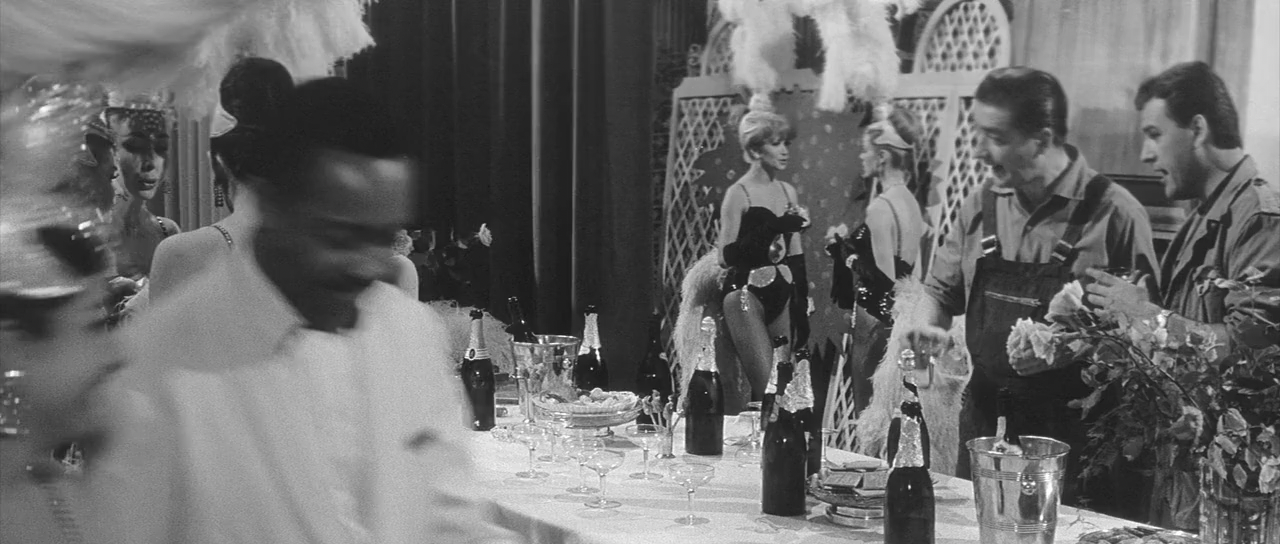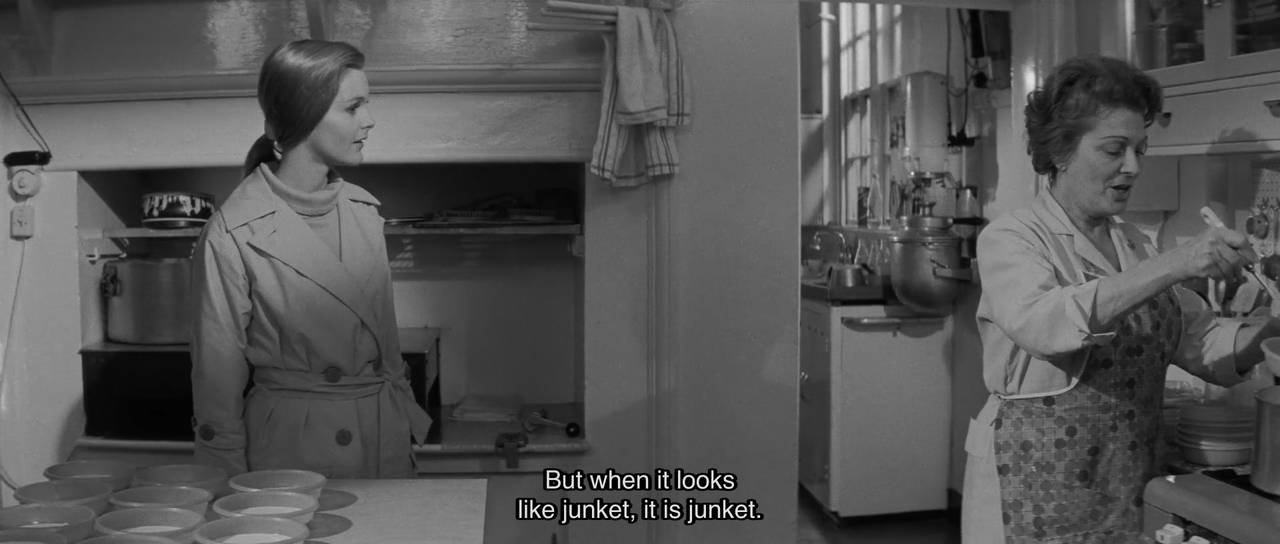“What drives me insane is the twofold nature of this nymphet, of every nymphet perhaps, this mixture in my Lolita of tender, dreamy childishness and a kind of eerie vulgarity. I know it is madness to keep this journal, but it gives me a strange thrill to do so. And only a loving wife could decipher my microscopic script.”Lolita (Stanley Kubrick, 1962)
Dec
18
Daniel LaRusso's birthday

Lolita (Sue Lyon) twirling her hoola hoop in the yard in front of Prof. Humbert Humbert (James Mason). He pretends to read but is mostly ogling her.. DP: Oswald Morris .
A backyard, deck or fences for Daniel LaRusso's (the Karate Kid kid who, as part of his martial arts training, endlessly paints fences) birthday.
– Prof. Humbert Humbert
bookadaptation
“I don't need a card to figure out who I am. I already know.”Lonely Are the Brave (David Miller, 1962)
Dec
15
bread

Jerry Bondi (Gena Rowlands) kneads dough. DP: Philip H. Lathrop.
– Jack Burns
Mélodie en sous-sol [Any Number Can Win] (Henri Verneuil, 1963)
Nov
22
banquet

Backstage at the Cannes casino, stars and stagehands enjoy their well-deserved end-of-season banquet. Just walking in front of the showgirls is piano player Sam (Jimmy Davis). DP: Louis Page.
Compartiment tueurs [The Sleeping Car Murder] (Costa-Gavras, 1965)
Nov
8

Eliane Darrès (Simone Signoret) – comédienne, by herself – takes a long hard look at her table-set-for-two. DP: Jean Tournier.
La notte dei diavoli [The Night of the Devils] (Giorgio Ferroni, 1972)
Oct
12
soup

The two children (Cinzia De Carolis on the right) eat soup and giggle. Some parsley is stuck to the left child's mouth. DP: Manuel Berenguer.
A História do Olho [The Story of the Eye] (Ivan Cardoso, 1977)
Sep
10
leite

Simone (Claudia Ohana) about to dip her derrière in a bowl with milk. DP: Eduardo Viveiros.
The Black Cat (Harold Hoffman, 1966)
Sep
9

A sad blonde (Robyn Baker) with her perfectly coiffed head on her perfectly set table. DP: Walter Schenk.
La horse [Horse] (Pierre Granier-Deferre, 1970)
Aug
23
baguette

Auguste Maroilleur (Jean Gabin) at the head of a long table, covered in Good Things (wine, butter, coffee, and fresh milk). He cuts a baguette with his pocketknife. DP: Walter Wottitz.
”'Junket is junket,' I said, and 'no matter what you do with it, it still tastes like swill and swallows like slime.'”Bunny Lake Is Missing (Otto Preminger, 1965)
Aug
4
junket

Two women – one young (Carol Lynley), one older (Lucie Mannheim) – in a school's kitchen. The older woman handling the food says “But when it looks like junket, it is junket.“. DP: Denys N. Coop.
– school cook
The Disappearance (Stuart Cooper, 1977)
Jun
21
cereal

Jay Mallory (Donald Sutherland) eats cornflakes in a black-tiled kitchen in Habitat 67. At the other side of their hexagonal table, Celandine (Francine Racette) smokes a cigarette. DP: John Alcott.